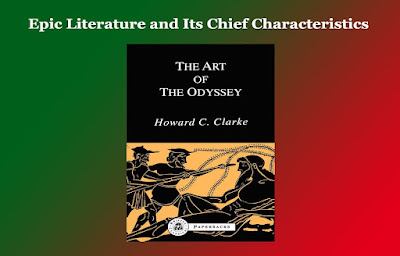History of Grammar
History of Grammar
History of Grammar
Introduction:
The history of grammar is a fascinating journey that spans thousands of years and reflects the evolution of human language and thought. Grammar, the set of rules governing the structure of language and the way words and phrases are used, has undergone significant changes throughout history, shaped by linguistic, cultural, and philosophical developments. This essay aims to provide an exhaustive overview of the history of grammar, tracing its roots from ancient civilizations to modern linguistic theories.
Ancient Civilizations:
Grammar finds its earliest roots in ancient civilizations, where the need for communication and record-keeping led to the development of structured language. The Sumerians, Egyptians, and ancient Chinese civilizations all had systems of writing that involved some level of grammatical structure. However, these early grammatical rules were often implicit and intuitive, lacking the formalization seen in later periods.
Classical Antiquity:
The Greeks, particularly the scholars of classical antiquity, played a pivotal role in shaping grammatical thought. Among them, Dionysius Thrax, who lived in the 2nd century BCE, is considered one of the earliest grammarians. His work "Art of Grammar" laid down the foundation for the study of syntax, morphology, and semantics. The Stoic philosophers, such as Chrysippus and Zeno, also contributed to linguistic theories, emphasizing the importance of logic and structure in language.
Latin Grammarians:
With the dominance of the Roman Empire, Latin grammarians emerged as influential figures. Varro and Priscian are notable names from this period. Priscian's "Institutiones Grammaticae" became a comprehensive guide to Latin grammar and was widely used in medieval education. The focus shifted towards the analysis of the Latin language, setting the stage for the grammatical study of other languages in the future.
Middle Ages and Renaissance:
During the Middle Ages, Latin remained the language of scholarship, and grammatical studies were primarily focused on understanding and preserving classical texts. The Renaissance witnessed a revival of interest in classical languages, leading to a renewed emphasis on grammar. Humanist scholars like Erasmus and Melanchthon contributed to the development of linguistic theories, and their works laid the groundwork for modern grammatical thought.
Age of Enlightenment:
The Enlightenment era saw a shift towards empirical and scientific approaches to language. Grammarians like Port-Royal logicians and John Locke emphasized the importance of observation and reasoning in understanding language. The study of grammar became more systematic, paving the way for the development of descriptive grammar as opposed to prescriptive grammar.
18th and 19th Centuries:
The 18th century witnessed the rise of comparative linguistics, with scholars like Sir William Jones proposing the idea of language families. The Grimm brothers in the 19th century made significant contributions to historical linguistics and morphology. Grammar became increasingly tied to the study of language evolution and the identification of linguistic universals.
Structuralism and Transformational Grammar:
In the early 20th century, structuralism emerged as a dominant linguistic paradigm. Ferdinand de Saussure's ideas on structural linguistics and Noam Chomsky's transformational-generative grammar in the mid-20th century revolutionized the field. Chomsky's theory, in particular, focused on the innate cognitive structures underlying language acquisition, challenging behaviorist views and inspiring a cognitive revolution in linguistics.
Modern Linguistics and Pragmatics:
Contemporary linguistics encompasses a wide range of theories, including generative grammar, cognitive linguistics, and functional grammar. Pragmatics, the study of how context influences meaning, has gained prominence, emphasizing the importance of communication in real-world situations. The advent of computational linguistics and the application of linguistic theories to artificial intelligence further expand the scope of grammar studies.
Conclusion:
In conclusion, the history of grammar is a rich tapestry that reflects the intellectual developments of different eras. From the intuitive rules of ancient civilizations to the formalized structures of modern linguistic theories, grammar has evolved alongside human language, leaving an indelible mark on the way we understand and communicate. As we continue to explore the intricacies of language, the history of grammar remains a dynamic and ongoing narrative. 0 0 0.
N. B. You may Like 'School English Grammar' specially written for students in a comprehensive manner. The grammar contains the following topics.
Grammatical Rules
Chap. Titles
2. Sentence: Classification According to Purpose
5. Clauses: Their Classification
6. Kinds of Sub-ordinate Clause
7. Clause Analysis of Complex &Compound Sentence
8. Classification of Sentence: According to Pattern
10. Determiners
11. Classification of Adjectives
13. List of Verbs
15. More About Verbs
16. More Functions of Auxiliary Verbs
17. The Finite Verbs and the Non-finite Verbs
18. Tag Question and Question Words
20. Tense of Verbs
21. The Conditionals
22. Voice Change
23. Narration
24. Preposition
26. Group Verbs
27. Correlatives
28. Relatives and Conjunctives
31. Conjunctions and Sentence Connectors
32. Phrases & Idioms
33. Punctuation
34. Common Errors
35. Sentence Pattern
36. Kinds of Phrase
37. Transformation of Sentence
Word Study
Chap.Titles
1. Synonyms
3. Antonyms
5. Diminutives
6. Some Foreign Words and Phrases
7. Distinction Between Groups of Synonyms
8. Formation of Parts of speech
9. Formation of Compound Words
10. Word Order
11. The Same Word Used as Different Parts of Speech
12. Use of Prefixes & Suffixes
15. Some commonly used Similes (Comparison)










Comments
Post a Comment
Comment should be honest and suggestive